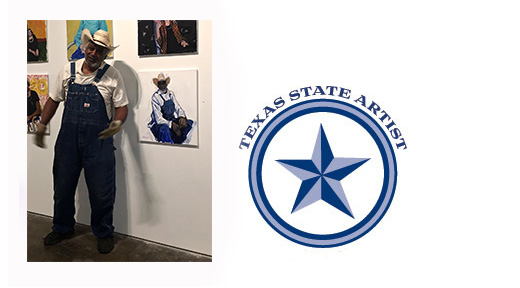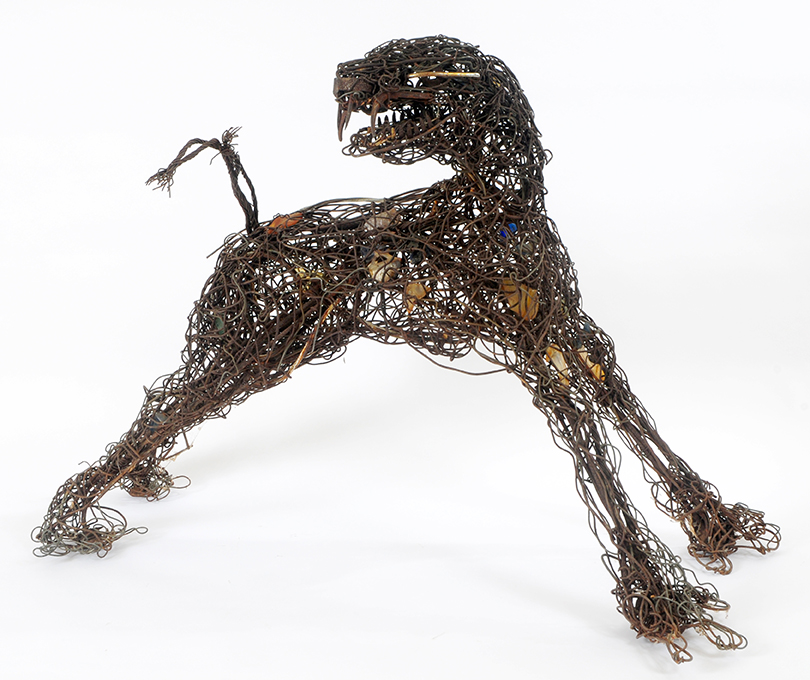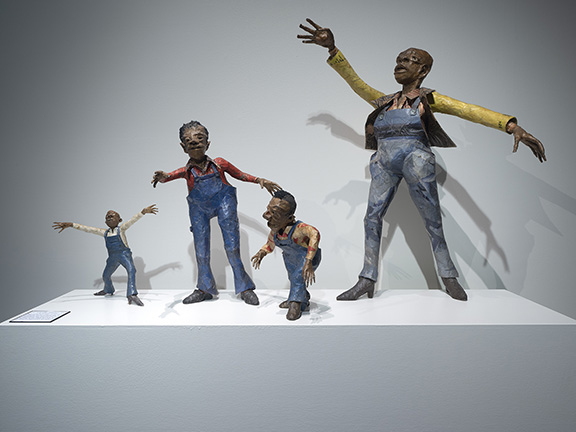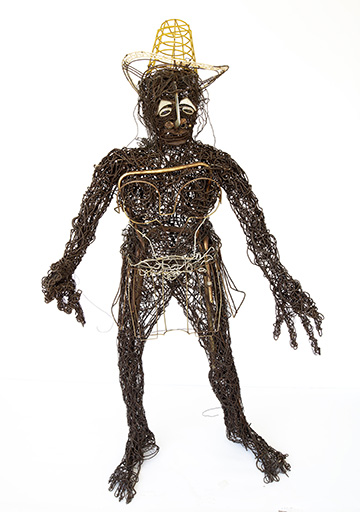
Jesse Lott is an African-American artist known for his wire and wood sculptures, papier mâché figures and collages made from found materials within an aesthetic he calls “urban frontier art”. He attended E.O. Smith Elementary School and Kashmere Gardens High School. In 1957, at the age of 14, he sold his first artwork, a painting. Lott has said this event marked the beginning of his professional art career.
Muralist John Biggers was an early mentor. Biggers was founding chairman of the art department at Texas Southern University (formerly Texas State University for Negroes). Following a trip to Africa, he visited area high schools, including Lott’s, and expounded on art, specifically the role of the black artist. Biggers taught that African American artists should turn to the mother country rather than Europe for inspirational models.
On Biggers recommendation, Lott enrolled in the historically black college Hampton Institute. He studied there during 1963 and 1964. From Virginia, he moved across the country to California State University (1965) and then Otis Art Institute in Los Angeles. During his time at Otis, 1967 to 1969, social realist Charles White was his drawing teacher and personal advisor. Lott fell in with the Black Arts Movement, a group of conceptual artists and collagists that included White, David Hammons and Joe Overstreet.
While Lott was skilled at painting and drawing, he soon discovered his true gift, turning trash to treasure and combining it with the spirit of activism. In “Collision: The Contemporary Art Scene in Houston, 1972–1985,” author Pete Gershon writes, “Very much in line with the Black Arts Movement, Lott’s work involved a kind of community-building social practice. It was common for him to hire a pack of loitering kids to dismantle a castoff bedspring and sort out its components. As Lott says, ‘There’s one kid that didn’t become a juvenile delinquent that day…’”
Dozens of solo exhibits and group shows, often surveys of African American artists, would follow. While some black artists bristle at being labeled, Lott sees it as an opportunity to recognize a racially divided country. Large touring exhibits that focused on black artists and featured Lott include “Next Generation: Southern Black Aesthetics” (1990-1992) and “Stop Asking, We Exist: 25 African American Crafts Artists” (1998-2000). A solo exhibit “Jesse Lott: Urban Frontier Artist” visited the Museum of Contemporary Art in Washington D.C. and the Art Car Museum in Houston. His work has also been shown at The Studio Museum in Harlem and The Alternative Museum (now closed) in Lower Manhattan.
On the role of the artist, Lott states, “Artists are entrusted with a metaphysical vision. It is said that a picture is worth a thousand words. That means that many words have been entrusted to those to whom God has given the ability to create. When a pebble hits a pool, it starts a wave that covers the whole pool. The pebble is the concept. An artist puts out a concept and the concept changes the consciousness of the viewer, leading to a positive change in the pattern of his activity.”
In addition to his visionary artwork, Lott’s shaman-like presence in Houston’s art community has had widespread impact. Many Texas artists including Rick Lowe, James Surls, Bert Long, Jr., Robert Pruitt, Angelbert Metoyer and Robert Hodge name Lott as an important influence. In the catalog for “Jesse Lott: Urban Frontier Artist” (1999), longtime friend and supporter Jim Harithas wrote, “He is respected for the integrity and power of his art and greatly admired for his many private acts of compassion to the homeless, to poverty-stricken seniors, to the young and to artists throughout the community. His all-ages workshops that he has held over the years in his studio as a community service have inspired many students who would otherwise have no exposure to art.” Lott has also been involved in other “significant community activities including Adept, the first museum devoted to African American culture in Houston [now closed], The Midtown Art Center, and the Art Car Museum. Lott’s community-oriented philosophy and his Artists in Action program helped spark the creation of the now famous Project Row Houses.”










